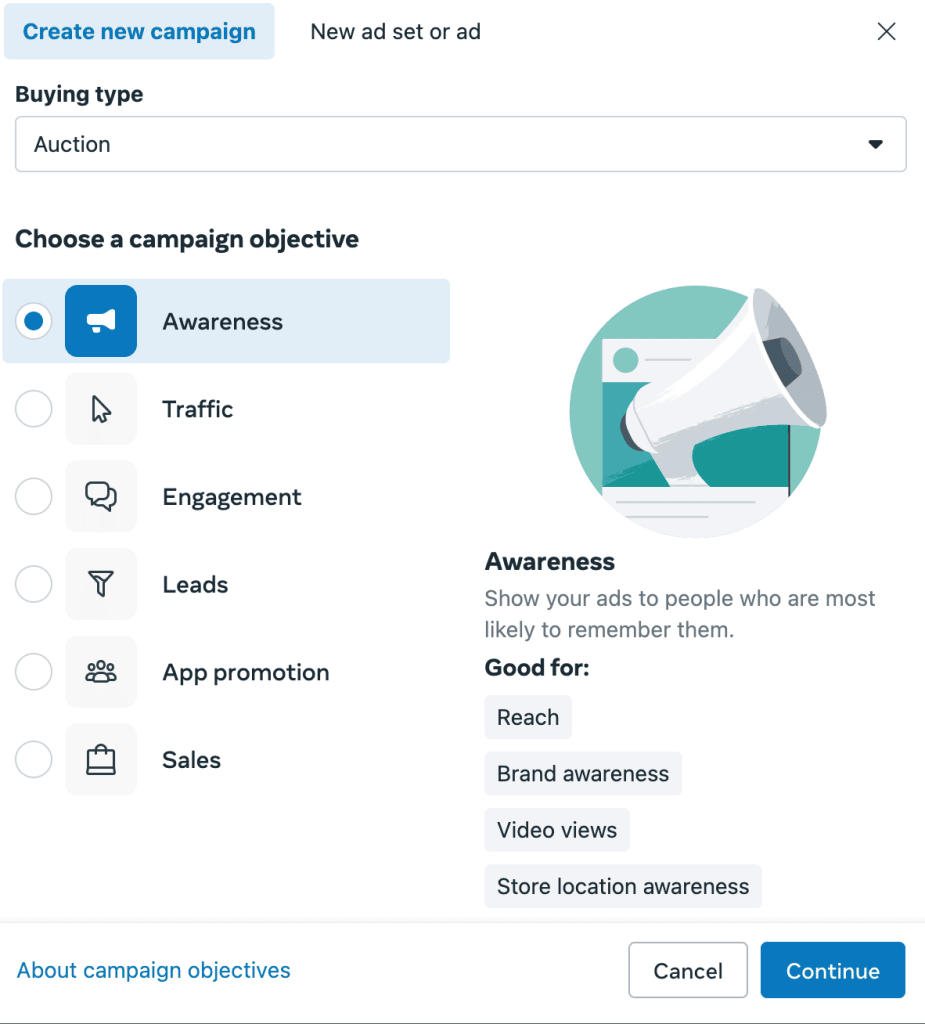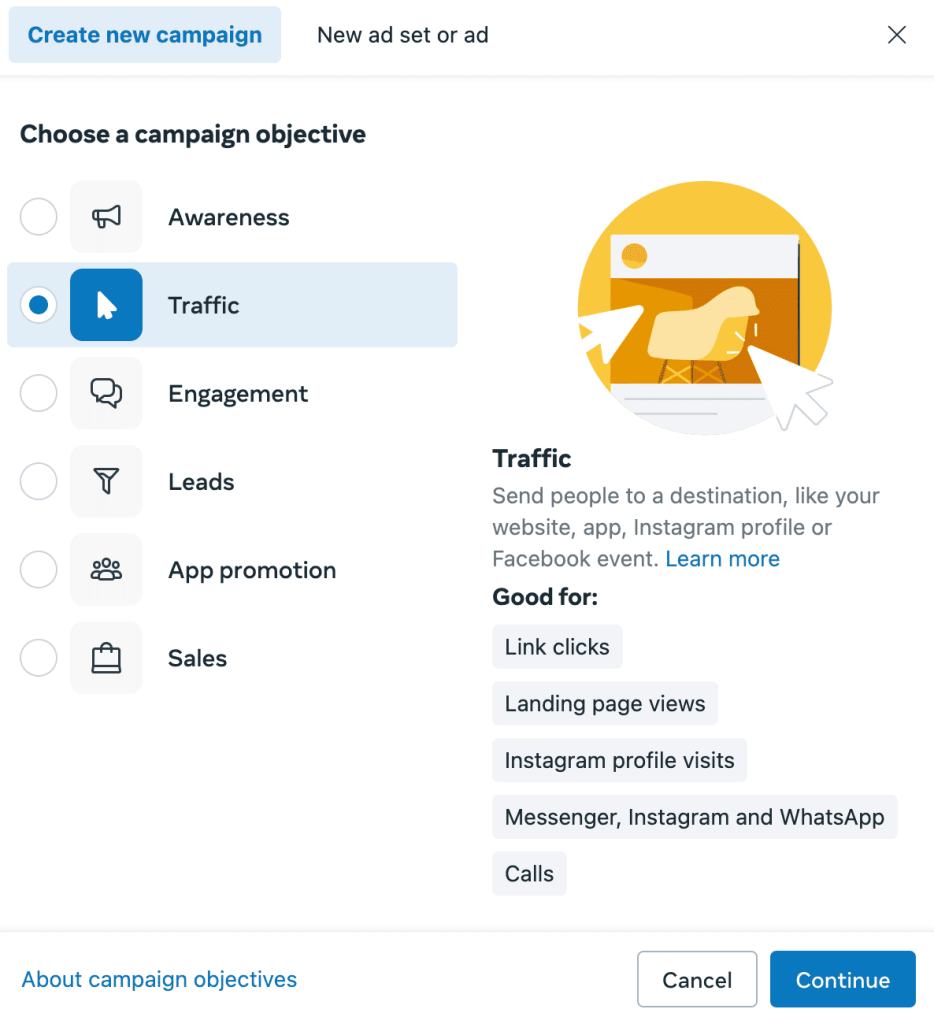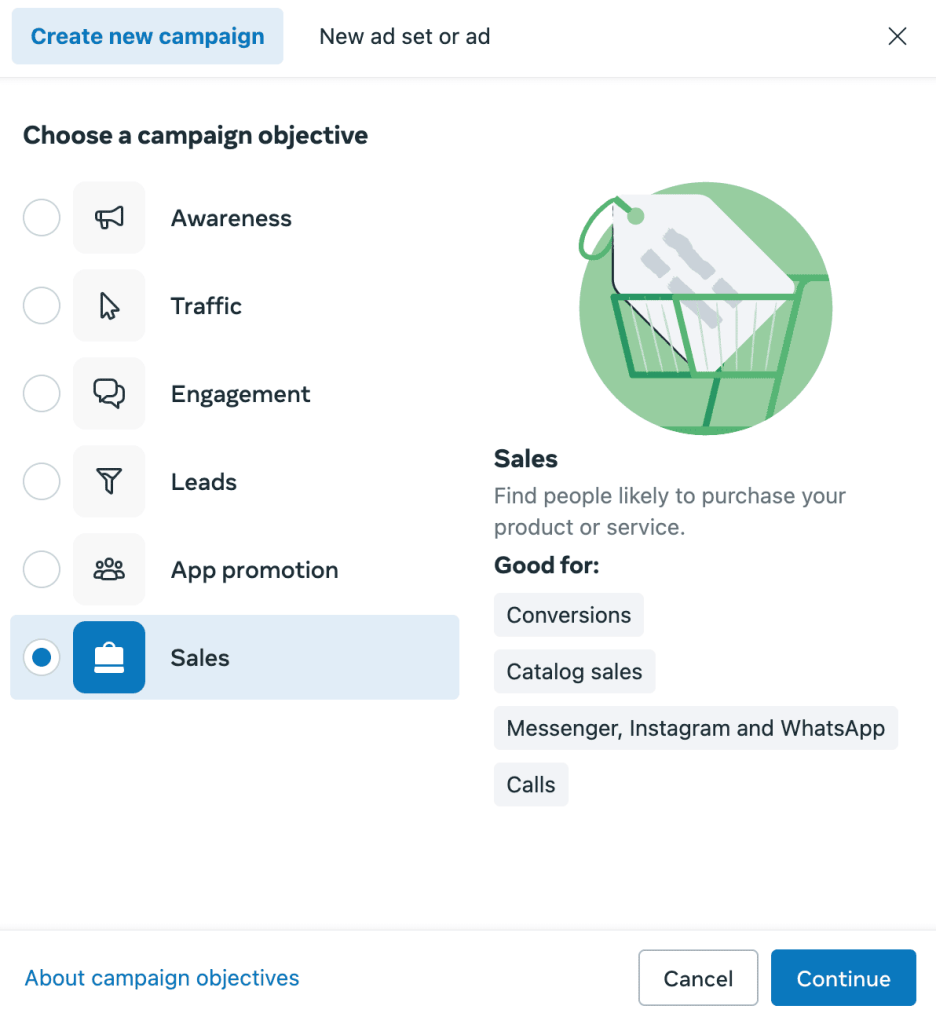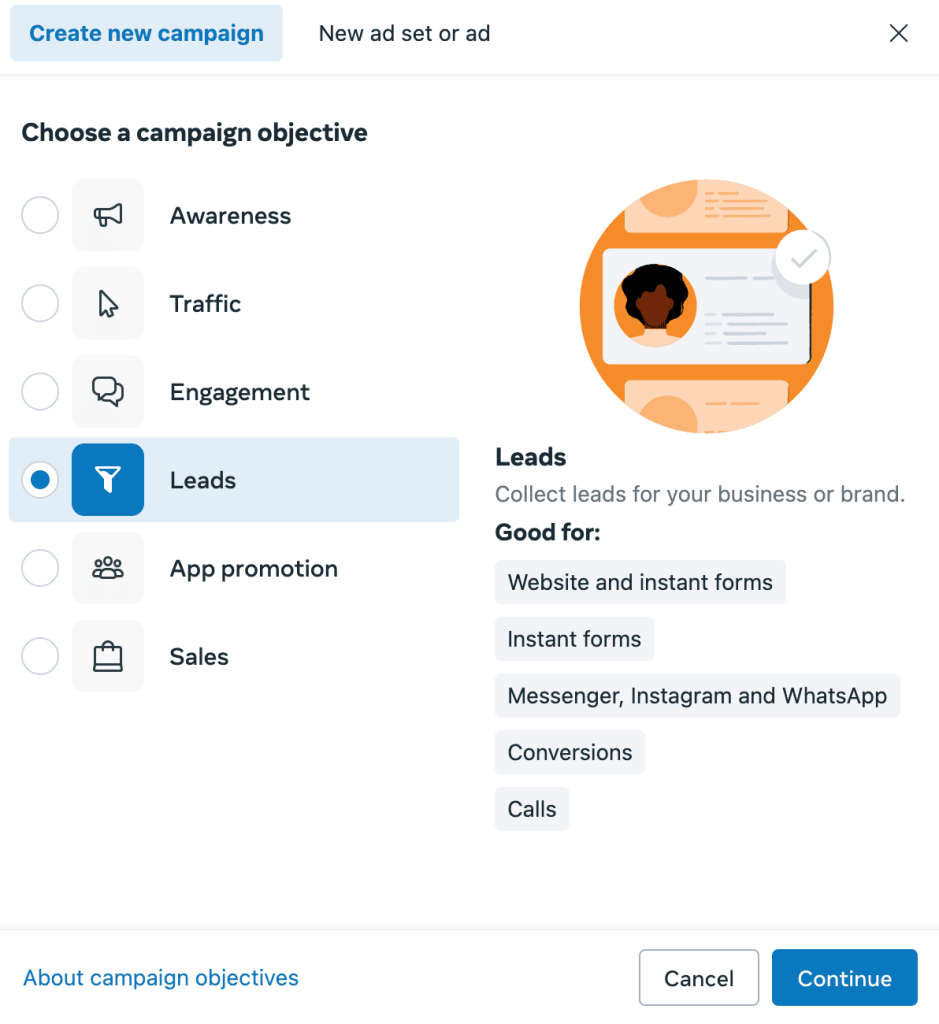
HOW TO CHOOSE THE RIGHT STRATEGY FOR YOUR FACEBOOK AND INSTAGRAM CAMPAIGN: WHY IS CPM, CPC OR CPA SUITABLE FOR YOU?
Imagine this: You set up ads on Facebook and Instagram and spent a several thousand dollars on them, but in the end, you got just a few likes, some joke comments in direct messages, no sales, and the feeling that your budget just “went down the drain.” Sounds familiar? Oh yes, I can guarantee 100% that you’ve been through this. Over the years of working with ads, I’ve learned that the problem is usually not the size of the budget or the platform itself—it’s that the wrong strategy was chosen to promote the business.
Meta platform has three main payment models: CPM (Cost Per Thousand Impressions), CPC (Cost Per Click), and CPA (Cost Per Action). If you don’t know when and how to use them, even a big budget won’t bring results. In this article, we’ll explain what these models mean, when they are truly effective, and how to avoid common mistakes I’ve seen many times.
What we’ll cover:
- Why the Right Strategy Defines Ad Success
- CPM (Cost per Thousand Impressions): Reaching the audience at the lowest cost
- CPC (Cost per Click): Driving traffic without extra spending
- CPA (Cost per Action): Paying for results—sales and leads
- Common Mistakes: Why Your Ads Might Not Be Working
- Conclusion
Why the Right Strategy Defines Ad Success
Choosing the wrong strategy for ad setup can turn your campaign into a “money drain,” regardless of your budget size. Let’s imagine this example: You launched a $77 campaign to promote your new product. Following the logic that the more people see my ad, the more I will sell, you decided to set up the campaign with a reach objective, using the CPM payment model. After the campaign ended, you got 50,000 impressions, a few likes, up to 10 comments, but no sales.
Why? Because the CPM model (cost per thousand impressions) was chosen with the hope of generating sales, even though this model is aimed at reach—meaning more brand or product awareness, not conversions or sales. If the CPA model (cost per action) had been used, the same $77 could have generated 5+ real leads. The choice between CPM, CPC, and CPA is not just a technical detail—it’s the key to whether your ad will drive results or just waste money. To avoid repeating these mistakes, let’s break down what these models mean and how they impact the success of your ad campaigns.
A Brief Overview of Each Model:
- CPM (Cost Per Mille)—You pay for every thousand ad impressions. Your ad will be seen by a large number of people, but there is no guarantee that anyone will click on the ad or make a purchase on your website.
- CPC (Cost Per Click)—You pay for each click on the ad, leading to your website or Instagram page. This model spends the budget only on those who show interest and click, but what those people do next depends on your website, social media page, or offer.
- CPA (Cost Per Action)—You pay for a specific action, such as a purchase, form submission, or registration. This means you only pay when someone completes the desired action, but the cost per result is generally higher.
Why is this critical? Each model serves different business goals. Want more people to know about you? Go for reach (CPM). Need website traffic or Instagram followers? Pay for clicks (CPC). Looking for sales or leads? Choose conversions (CPA). Getting this choice wrong means wasting money: impressions don’t drive sales, and expensive actions don’t pay off for basic brand awareness. In the rest of the article, you’ll see some examples with calculations that show how to pick the right model for specific goals and avoid empty spending. But first, remember this: The right payment strategy is what decides whether your Meta ads become a tool for success.
CPM (Cost per Mille): Reaching the audience for the lowest cost.
CPM—This is a payment model where you pay for every 1,000 impressions of your ad on Meta platforms (Facebook/Instagram). This strategy is one of the most budget-friendly ways to reach as many people as possible because you only pay for showing the ad. When setting up your ad campaign, choose the “Awareness” objective (as shown in the image below), and the system will automatically optimize impressions for maximum reach to your audience. As a result, you get brand, product, or service visibility and memorability, but without guaranteed clicks or sales.

How much can a thousand impressions cost? It depends on various factors such as niche, competition, or targeting. You can calculate it using the following formula:
CPM = (Spent Budget / Number of Impressions) * 1000
For example, if you spent $51 on a campaign and got 42,000 views, the CPM would be calculated as:
(51 / 42,000) * 1000 = $1.21 per thousand impressions.
This formula helps you plan the number of impressions you want to get. If you know the approximate CPM (for example, based on previous campaigns or the average for your niche), you can easily estimate the expected number of impressions:
Number of Impressions = (Spent Budget / CPM) * 1000
Now, imagine this scenario. You have created a new brand that produces marshmallow flowers, which has just entered the market. You need people to remember your logo, see the beauty of your bouquets, and save your contact information for future orders. CPM is your choice because visibility is key here. But if you’re expecting instant sales, you might feel disappointed—impressions don’t guarantee actions.
📌 Read in the blog: Facebook Lead Ads: how not to drain your budget and rolling in leads
CPC (Cost per Click): Driving Traffic Without Extra Costs
How can you increase website visits? What objective should you choose to get more page visitors on Instagram or Facebook and gain followers? Sounds familiar? If you’ve ever created a new campaign in Meta Ads, you’ve probably asked yourself these questions.
In such cases, the CPC (Cost per Click) model is your go-to strategy. With this method, you only pay for clicks on your ads on Meta platforms. Unlike CPM, where you pay for impressions regardless of user actions, with CPC, your budget is spent only on the audience that shows interest and clicks the link—for instance, to your website, landing page, or Instagram profile.
Now, let me answer the question you’re likely asking: “What will my cost per click be?” The cost of a click depends on several factors, including the niche, competition, ad quality, and targeting settings (interests, behavior, location, etc.). It can range from $1 to $40 or more. To achieve your objective—whether it’s increasing website visits, social media page traffic, or gaining followers—choose the “Traffic” objective when setting up your ad campaign.

When the campaign is running, the system automatically optimizes ad displays to reach people who are likely to click. As a result, you get an interested audience, but remember the most important thing—the further success depends on the quality of your offer, website, or social media page that the ad links to. If the page is not user-friendly or the offer is weak, the clicks won’t bring any benefit. And the joy from a high number of clicks will disappear just as quickly as a paycheck after the first week.
CPC Formula
CPC = Spent Budget / Number of Clicks
A simple example: If you spend $625 and get 1,200 clicks, the CPC will be:
625 / 1,200 = $0.52 per click.
This example shows that CPC helps attract a targeted audience at a reasonable cost, but clicks are only the first step toward the desired outcomes. Of course, we all want the result of the ad campaign to be more than just clicks and visits—we want specific actions like purchases or sign-ups. In the next section, we will look at the CPA model, which focuses on the final outcome rather than the process.
CPA (Cost per Action): Payment for results—sales and leads.
After reviewing the previous two payment models—CPM and CPC—let’s move on to one of the main ones: CPA (Cost per Action). The CPA payment model is all about paying only for specific actions taken by your audience on the website. This could be a purchase on the site (Sales), filling out a lead generation form (Leads), signing up, or any other targeted action that you define. Unlike CPM, where you pay for impressions, or CPC, where you pay for clicks, CPA focuses on the final result rather than intermediate actions. It’s one of the best strategies if you have an online store and want to increase your revenue.
To achieve your goal, when setting up the campaign, choose the objective “Sales” or “Leads.”


The system automatically optimizes ad delivery to reach people who are more likely to take the desired action. As a result, you will only pay for what brings real value, but it will cost more, making this model the most expensive of the three.
To calculate Cost per Action (CPA), use the following formula:
CPA = Spent Budget / Number of Actions
If you have a history of running similar campaigns in the ad account, then with an approximate CPA value, you can estimate how many sales or leads you can get for a specific budget.
Number of Actions = Spent Budget / CPA
For example, let’s say your budget is $375, and you are aiming for a CPA of $6.25. Then:
375 / 6.25 = 60 actions. If the CPA is higher, say $12.50, the number of actions will be lower: 375 / 12.5 = 30 actions for the given budget. Moreover, knowing all variables during the campaign will help you scale by increasing the budget.
Now, let me give you an example. You offer consulting services for opening a beauty salon and want to collect inquiries from potential clients. In this case, you don’t just need clicks to the website—you need completed contact forms, meaning leads that managers will handle and offer specific consulting packages. CPA is your choice because you only pay for those who submit a form. However, if the form on the website is complicated or the audience does not trust your offer, you could end up spending your budget without results.
This approach shows that CPA is about paying for results, not for the process. But perfect campaign performance and quick results are rare—what if your ads still don’t work? In the next section, we will look at common mistakes that can prevent you from getting results and how to avoid them.

Expert Commentary
For most e-commerce businesses, I recommend a CPA strategy—both for B2B and B2C. Start with catalog Sales campaigns, and once Meta’s algorithm is trained, you can test Advantage+ campaigns. Using only Advantage+ for new businesses is a bad option—you’ll likely just waste your ad budget and conclude that ads don’t work.
For service businesses, I suggest testing several strategies right away. Start by driving traffic to the website—targeting specific audiences and using basic conversion tracking. Then, test more advanced models, like traffic campaigns optimized for conversions, or simultaneously run ads for lead generation through Instant Forms or messaging apps like Messenger or WhatsApp, depending on your target audience.
In service businesses, the key metric isn’t just the number of leads or cost per lead but also the quality of closing deals. It’s crucial to track how the sales team works, how they manage data in CRM, and whether the marketer has access to funnel results. For example, if 5 out of 50 leads through Direct Messenger become clients, you should assess performance not just by lead cost but by CAC—customer acquisition cost.
Unlike e-commerce, service businesses don’t have a simple “visit—buy—done” scenario. Here, assessment relies on sales efforts, CRM data, spreadsheets, reports, and sometimes even rough estimates based on various conversion channels.
Common Mistakes: Why Your Ads May Not Be Working
When setting up an ad campaign with the right payment model—CPM, CPC, or CPA—you may still face low performance if common mistakes are made. Let’s look at some of these mistakes to prevent you from asking later: “Why isn’t the ad I spent time and money on bringing any results?”
- Choosing the Wrong Campaign Objective
You wanted to drive sales from your online store, but you selected the objective “Awareness” instead of “Sales.”. The platform will optimize for maximum reach instead of specific actions. For example, you’re selling wooden educational toys but only getting thousands of views without a single registration. This is because Meta is targeting people who will just view your ad like they would a regular post about cute cats or dogs. Always make sure the campaign objective matches your business goal.
- Incorrect or Broad Targeting
Do not choose too broad an audience (for example, “all women aged 18–65”), as this will cause your ads to be shown to people who are not your target and are unlikely to be interested in your offer. On the other hand, a too narrow audience (for example, only those who have already bought from you) limits your reach. For effective targeting, define your ideal customer, create their profile, and use interests, behavior, or location that align with them.
📌 Read on the blog: How to calculate ROI, ROAS and ROMI indicators
- Weak creativity
If your ad doesn’t catch attention and has a low CTR—for example, due to a poor-quality image, boring text, or no call to action—people will just scroll past it because it doesn’t grab their interest. Imagine this: Your task is to attract people to a new fitness club, but the image is a dull photo of a single exercise machine with no people and no text to engage them. This is unlikely to catch the audience’s interest. Use bright images, clear text, and a strong call to action, such as: “Get 50% off 12 sessions to celebrate our opening. Only from April 20 to April 22.”
- Problem with your website or landing page
Even if your ads are getting clicks, but your website is slow, the form is complicated, or the offer is unclear, users will leave—remember, you’ve probably done the same. For example, you’re promoting consultations, but the landing page doesn’t clearly state the price or benefits—customers will just close the page. Make sure your website provides complete and accurate information, includes real reviews, and works quickly without “lags.”
Of course, these are not all the mistakes that can affect the results of your campaign. But they are some of the main ones I see during audits of our clients. Avoid them, and your campaigns will become more effective.

Comment from a PPC specialist
I want to emphasize that advertising on the Meta platform is not a magic solution that automatically brings profit, or as some call it, the “money button.” Its success depends on many factors in your niche: how relevant and popular your product or service is, the level of competition in your field, and how well you understand your audience.
Conclusion
In this article, we covered three main payment models in Meta Ads—CPM, CPC, and CPA. Each model has its strengths and is suitable for different goals. With CPM, you can reach a large audience and increase brand awareness for a low cost, but it doesn’t guarantee user actions. CPC is effective for driving interested users to your website or social media page, but the success depends on the quality of your offer or the appeal of your Instagram page. CPA focuses on specific actions like sales or sign-ups, but it requires a higher budget and well-optimized sales funnel.
Avoid common mistakes like incorrect targeting or weak creatives, and always analyze campaign results to understand what works best for your business. Start with a small budget, test different approaches, and scale up what brings the best results. This way, your ads will become an investment in growth, not just an expense.